How to Get Rid of Mustard Algae in Your Pool – 8 Easy Steps
-

- Last updated:
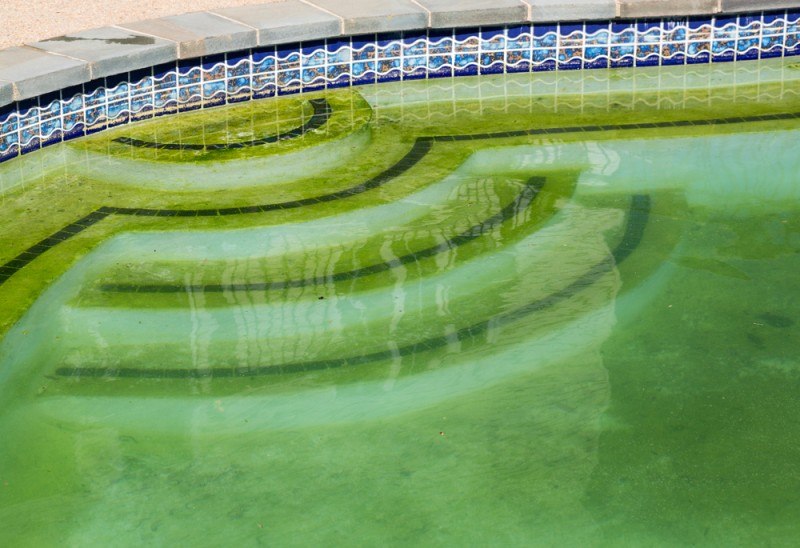

As pool experts, just the mention of the word mustard makes us cringe.
Most of us have entirely stopped putting mustard on our turkey sandwiches just because of the memories it brings up.
Dealing with a mustard (or yellow) algae outbreak in your pool is a real pain. It can be cleared up, and your pool will be exceptional again, but it will take some time, some elbow grease, and some chemicals.
We will give you our proven 8-step method to get rid of mustard algae and then some tips on keeping it away.
The 8 Steps to Rid Mustard Algae:
1. Test Your Pool Water
Yes, we know that most of our guides start with testing the pool water, but you need a baseline established.
Make sure that you get the reading on the pH and chlorine.
2. Brush & Clean
Grab your brush and hit every surface of your pool. The sides, the bottom, the ladders, the steps it all needs to be brushed. This will disturb the algae and get you headed towards the process of removal. Once the brushing is done, you can vacuum the pool.
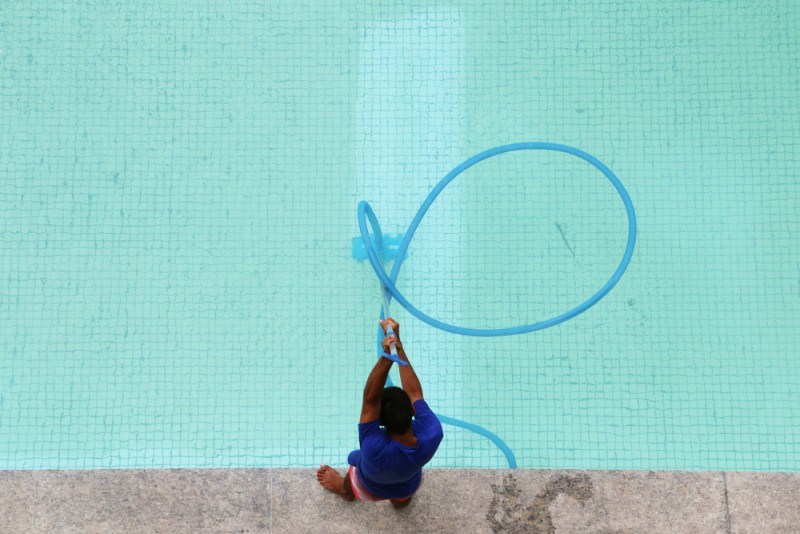
3. Test
When the vacuuming is done, test the water again and see if anything has changed. Balance the pool water as best you can at this point. If you need to add any water to the pool after your vacuum, now is the time to do it.
4. Clean
Now the cleaning begins to make sure that your mustard algae is gone for good. All swimsuits, pool toys, and pool equipment must be cleaned.
You should use a chlorine-based cleaner (something like Clorox Clean-Up), but you do not need to use straight bleach. Straight bleach can be very damaging to clothing and fabrics and even some plastics.
Use that brush one last time to hit the sides of the pool. The more you brush that mustard algae away, the better off you will be.
All of the pool equipment that has come into contact with the pool water should be put in the low end of your pool. The vacuum, the pole, and all the brushes you have used will need to be in there when you get to the step of shocking the pool.
Clean the pool filter and backwash if necessary.
5. Shock It Hard
Now is the time to shock the pool. This will likely take more than a single shock treatment. Most pool owners need to do a triple shock to get the pool back to where it needs to be. Go ahead and triple shock the pool, with the pool equipment in it.
Do this at night so that the sun does not burn off that powerful chlorine that the pool needs to get back to its usual self.
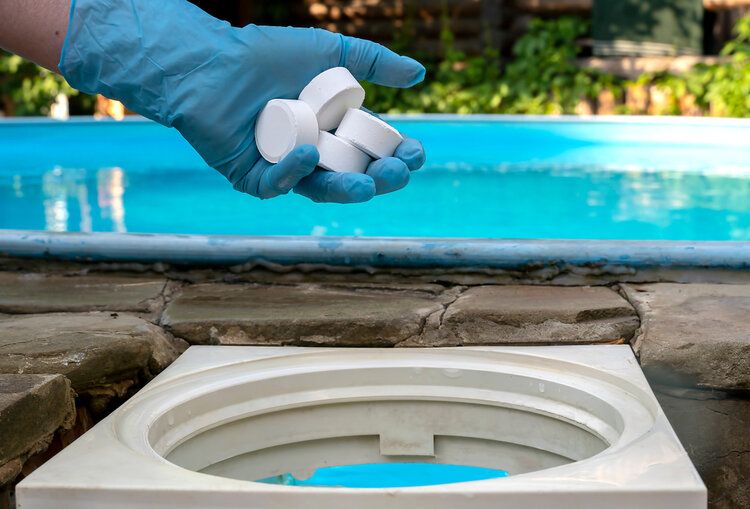
6. Brush
Yep, back to the brushing.
Grab the brush out of the low end and use it to brush the entire pool again. Hopefully, at this point, some of the algae seems to be disappearing. You can leave all of the equipment in the low end for now. When you finish brushing, toss that brush back in the water.
7. Shock It Again
The pool will need another shock after that last brushing. This can be a single shock, and you do not need to do the triple shock that you did in step number five. Keep in mind that with the high levels of chlorine that the pool will be experiencing with the extra shocks that you should not be using the pool during this time.
8. Check It All Out
After that final shock treatment, your pool should be back in working condition. At this point, you will want to take a look at your filter and maybe do another backwash as well. You want to make sure that no mustard algae is hiding out in any of your equipment. It is ok to take the brush and other pool equipment out of the low end now.
Check for any visible signs of algae growth and make sure to stay on those by continually brushing.
Your pool would likely benefit from an algaecide treatment about 3-5 days after the last shock. Some pool owners add algaecide to their pool monthly or biweekly to stay on top of these outbreaks.
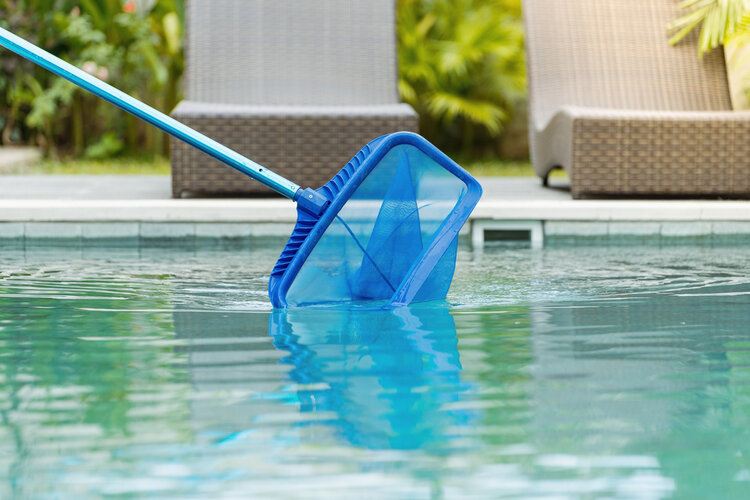
Why Did I Get Mustard Algae in My Pool?
Now that we have explained what to do if you have mustard algae in your pool, you may be wondering how it got there in the first place. Here are a few things that may have led to your mustard algae breakout.
High pH Levels: If your pH levels stay too high for too long you are giving mustard algae the chance to grow
Low Chlorine: Don’t skip the chlorine. Make sure your chlorine is always within range if you are trying to keep mustard algae at bay
Filter Issues: If your filter is not properly circulating the water, any kind of algae can grow. Being that mustard algae is almost as annoying as black algae is be sure to keep a close eye on that pool equipment.
What Can I Do to Keep Mustard Algae Away?
Now that you have your pool all cleaned up, it’s time to make sure that this never comes back.
Catch It Early
First, let’s talk about testing those water levels if you are testing your pH and chlorine once a month you are asking for an algae outbreak. When we recommend that you check your pH levels a few times a week, we aren’t kidding. Catching a change in the level right from the beginning can make a big difference in the amount of work you have to clean everything up.
Try a Floating pH Monitor
If you are not someone that can be trusted to check the pH levels in the pool continually, there is a device that can help. With a floating pH monitor, your chemicals will be tested several thousand times per week. The results of these tests will be sent directly to an app on your phone. As soon as the levels start to go astray, you will get a notification that something needs to be done. Perhaps better than just the warning, you will also receive information on how to fix the issue. This all comes at a price, but it may be worth it when your arms are about to fall off from all the mustard algae scrubbing you have been doing.
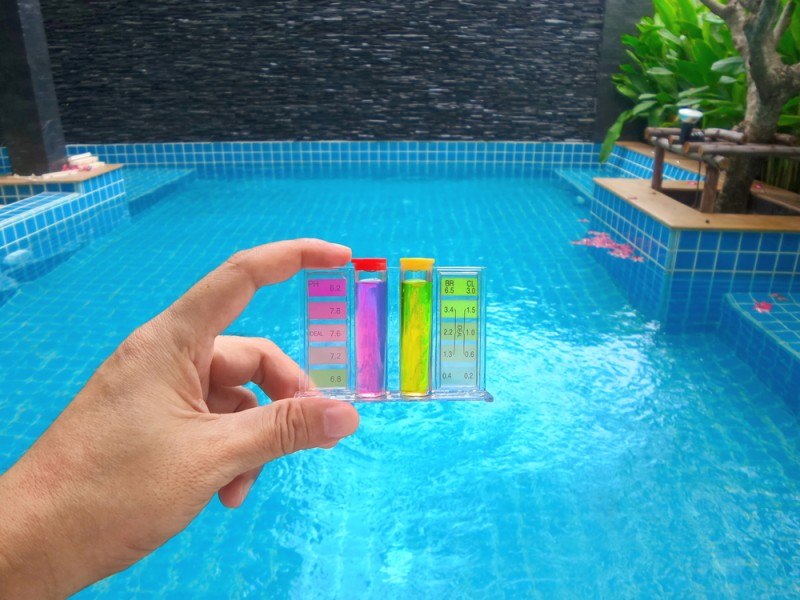
Don’t Fear the Shock
Second, don’t be afraid to use shock. Many pool owners think that they need to save the shock for when things get terrible. You really shouldn’t be doing this. Shock your pool regularly. During the high swim season, when you have lots of people using the pool, go ahead and shock It every week. It won’t hurt the pool, and it will keep some of these issues away before they even start.
Keep Your Filter Running
Third, keep your filter running. Yes, we understand that it gets expensive to run your filter 8, 12, 16 hours a day, but it needs to be done. If you have a pool that is in direct sunlight and the weather has been warm, you are just asking to create algae. Keep the water circulating through your filter (algae hates that), and you will see a lot fewer issues.
Do the Dirty Work
Last, you have to clean the pool. It can be a lot of work, and with all the other things that go on in your day, taking the time to clean the pool can be exhausting, but it’s better than a mustard algae outbreak. Each week when you vacuum the pool, you need to brush the sides as well. It only takes a few minutes to go around the sides and be sure that nothing is starting to grow.
With the combination of these methods, you should be able to keep that mustard algae out of your pool for good!
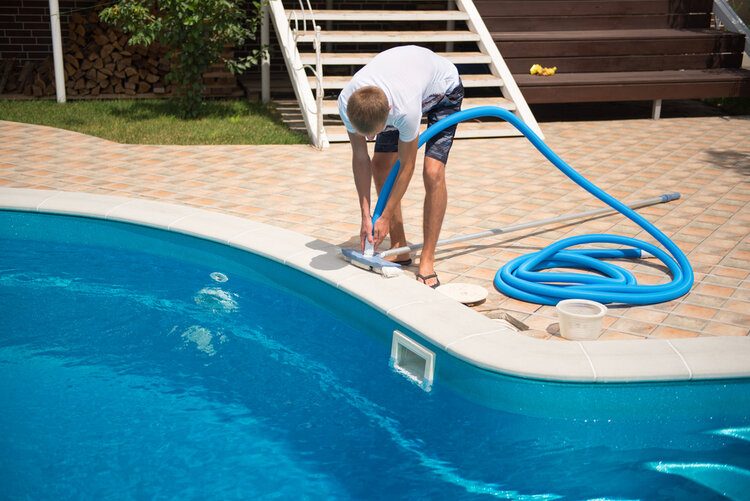
Is It Safe to Swim When My Pool Has Mustard Algae In It?
Technically the algae itself is not dangerous for humans. The problem is if it is left to sit and multiply, it can be a breeding ground for bacteria. Swimming in bacteria is, in fact, dangerous and should be avoided at all costs. The only people eager and willing to jump in your mustard algae-covered pool are likely your children. With how much water children consume when swimming, it’s best to keep them out until the algae is gone, and all chlorine levels have returned to normal.
Is Mustard Algae Worse Than Green Algae?
Mustard algae falls somewhere in between green algae and black algae.
The problem with mustard algae is that it looks quite a bit like sand or dirt in the pool, and it can go untreated for quite some time. Make sure that when you see this type of algae that can range from a yellow to a brown color that you start treating it immediately.
Green algae is the easiest to remove, and black algae is the hardest. Mustard algae falls in the middle because it takes some work, but it should go away if treated properly. If mustard algae is not taken care of, there is a chance that you would have to drain your pool, acid wash it, and then fill it again. This is a very worst-case scenario that can easily be avoided by proper and routine pool maintenance.
Conclusion
Although you can get your pool back to swimmable in just a few days, avoiding mustard algae is the key.
With simple monitoring procedures, you can easily keep things under control. Just be sure to treat the algae as soon as you recognize it. Don’t be afraid to use high levels of shock to kill it and get those arms ready for some scrubbing.
You want to make sure that this mustard algae removal lasts!
Featured Image Credit: Steve Heap, Shutterstock
Contents


